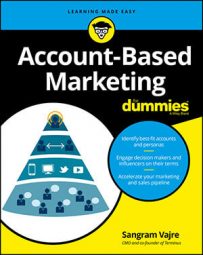There are two categories of webinars: thought leadership and product. Each category serves a different marketing purpose:
- Thought leadership: You demonstrate your knowledge about a subject without making it a product pitch for your company. For example, a company focused on B2B marketing can host a webinar about doing webinars. If your company is hosting the webinar, invite a non-employee thought leader to join the session. This reassures your webinar registrants that your webinar's content is unbiased, not a product pitch.
- Product: This type of webinar showcases how to use your company's product or service. Using the B2B marketing company example, a product webinar shows marketers how to conduct a webinar focused on using webinar technology.
Prerecord your webinars. You can then edit the recording to remove any errors and replay these during your scheduled time so they appear to be live.
There is a time and place for each type of webinar. If you work for an early-stage company, you will want to create a thought-leadership webinar to demonstrate your industry knowledge and subject matter expertise. If you work for an established organization, you should continue doing thought leadership webinars on a regular basis (weekly, monthly, or quarterly), along with these product webinars.
Here's how to create a good webinar:- Message: The topic must be timely, focusing on industry trends or recent news developments. Here is one example of a successful webinar from my colleagues at a company called Preparis a B2B company that does business continuity planning and emergency preparedness. The marketing team decided to present a webinar about preparing for an active shooter. This was in 2013, right after the tragic shooting at Sandy Hook Elementary. The marketing team hired a former police officer who was trained by the Department of Homeland Security to host the webinar and educate businesses on how to prepare and respond to an active shooter at the office. That webinar had more than 800 registrants and 500 attendees listen live.
- Influencer: Using the preceding example, the police officer was a great influencer to have on the webinar. He was able to provide an unbiased opinion of best practices that helped to promote thought leadership. If you're presenting a product webinar for your customers, include a senior executive or product specialist from your company who can demonstrate his or her knowledge and give exceptional guidance or training.
- Use cases: Provide examples of how the topic you're discussing applies in everyday life.
- Content: Should be less formal, more conversational, and present an agenda with a high-level overview.
- Q&A: Leave at least 15 minutes at the end of your webinar to give your audience the opportunity to submit questions and have their answers discussed live on air.
- Send the recording: Using your marketing automation tool, you can track your webinar registrants to create two different lists:
- Folks who listened in live.
- Folks who can be prompted to watch a replay.
Always record your webinars. Before you go live on air, there is a record button in the webinar tool or dashboard. A webinar can be edited to create videos that you can then share. You can also replay the recording and transcribe your webinar. The transcription service Rev.com lets you upload your webinars then transcribes the recording at $1 per minute. You're then sent a Microsoft Word .doc with the full transcription of the session, so you can use all the great quotes for future whitepapers, ebooks, or blog posts.

